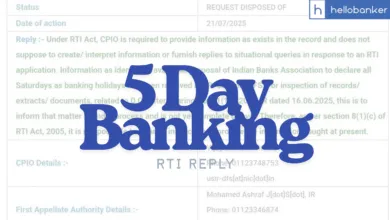How RBI earned Rs 2.1 lakh crore this year? Know here

| ➡️ Get instant news updates on Whatsapp. Click here to join our Whatsapp Group. |
The Reserve Bank of India (RBI) is poised to deliver a record-breaking dividend of over Rs 2.1 lakh crore to the government, a notable achievement especially as some central banks in advanced economies are facing losses and negative equity. This significant payout is a result of RBI’s active interventions in foreign exchange and money markets. Read: How much RBI paid to government in last 6 years, Check here.
Factors Contributing to Higher Earnings in FY24
- Investments in Sovereign Securities: The RBI’s $469 billion investments in risk-free sovereign securities of developed countries, especially the $250 billion in US treasury bills, yielded returns of nearly 4%, significantly higher than the previous year.
- Increased Interest from Repo Agreements: The interest earned from short-term lending to liquidity-starved commercial banks through repurchase agreements (repo) increased. The money market experienced a ‘deficit’ situation in FY24, unlike the ‘surplus liquidity’ in FY23.
- Gains from Dollar Sales: The RBI booked gains through its ‘gross sale’ of dollars. This was a key factor in doubling the size of the dividend to the government compared to the initial figure stated in the interim budget on February 1. The central bank profited from the difference between the selling price and the average purchase price of dollars. For example, if the average purchase price was 78 rupees per dollar and the selling price was 83 rupees, the RBI made a gain of 5 rupees per dollar. With gross sales exceeding $150 billion in FY24, a significant portion of the dividend is explained by these transactions. Read: How much RBI paid to government in last 6 years, Check here.
Net Purchase of Dollars
The RBI’s ‘net purchase’ of dollars, the difference between gross purchase and gross sale in the forex spot market, was $41 billion in FY24 due to a balance of payment surplus. To support the rupee when it comes under pressure, the RBI sells dollars. In a hypothetical $5 billion shortage scenario, the RBI can sell $5 billion directly or sell $25 billion and buy back $20 billion, resulting in a net sale of $5 billion. The RBI chose the latter approach, as it allows booking gains from gross sales, thus enabling a larger dividend declaration.
Future Prospects and Challenges
The RBI’s ability to generate similar profits and pay substantial dividends in the coming years may be limited. When the RBI makes significant dollar purchases, the average cost of dollars in its reserves basket increases. With the current exchange rate around 82-83 rupees per dollar, the average cost of reserves may rise from 78 to a higher figure, such as 80. Unless the rupee depreciates further, it will be challenging for the RBI to record comparable gains in FY25. This situation raises questions about whether Shaktikanta Das’s successor will face difficulties in announcing an impressive dividend next year.
Additional Considerations
Several variables can influence future dividends:
- Potential declines in earnings from other sources
- Market volatility
- The need to allocate more reserves as buffers
Under Das’s leadership, the RBI has maintained a higher buffer against contingent risks, setting it at the upper band of 6.5% of the book, within the allowable range of 5.5-6.5%. Additionally, the central bank allocates funds for economic capital, determined by a dynamic model linked to market volatility, which has also been increased slightly from its historical level of 20.5%.

The Govt. has earned a considerable amount from GST, CST, Excise and custom duty, purchasing crude oil from friend country Russia and after refining it, sell to other countries on handsome profit